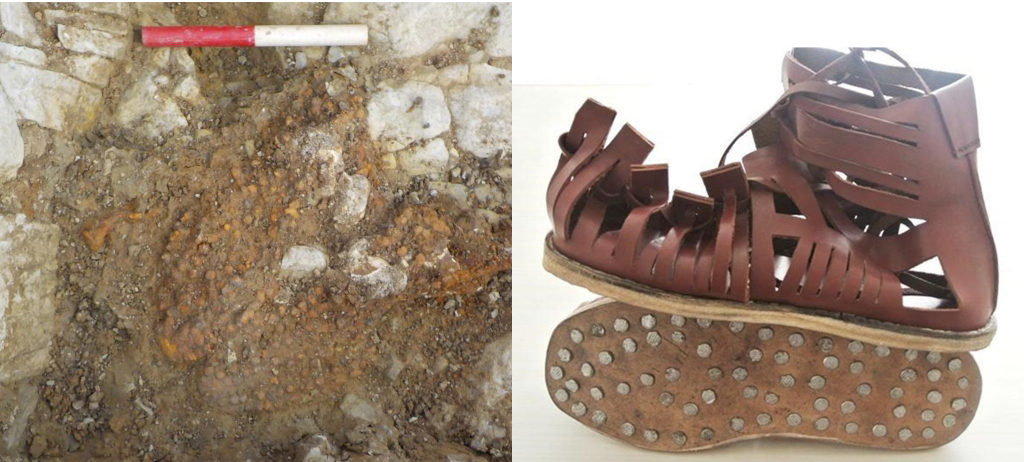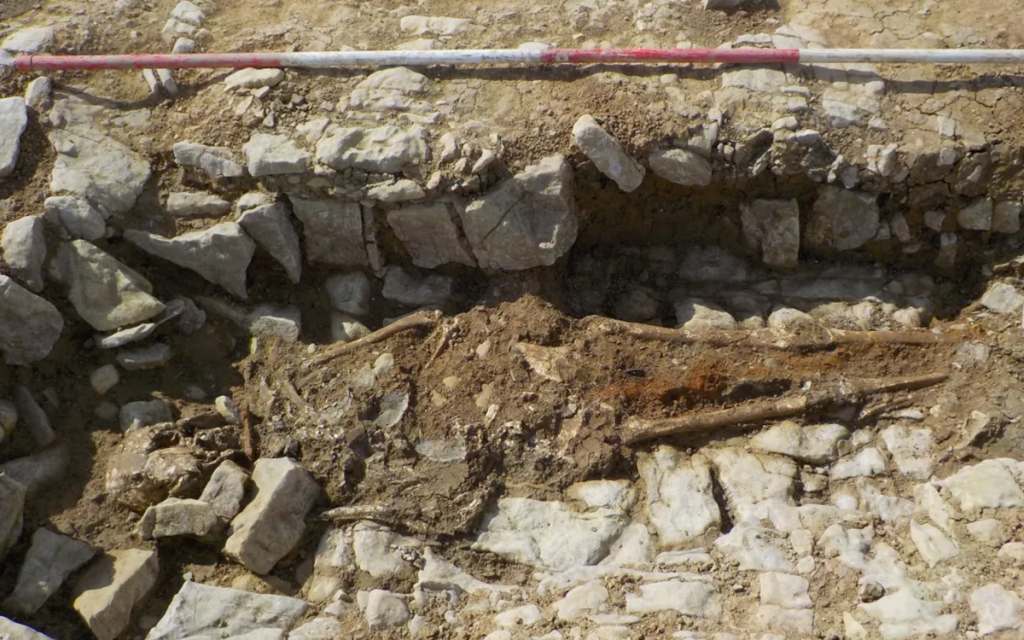In a desolate area near a Roman villa in Wales, archaeologists discovered the skeleton of a man buried face down, adorned with a silver brooch and a sword. This intriguing find raises questions about whether he was a distinguished Roman soldier or perhaps even a captive. The presence of large nails that had fallen from his fingers during decomposition adds further evidence suggesting that he was restrained before his death. Let’s delve into the details surrounding this enigmatic burial and explore the possibilities of the man’s identity and social status.
Unearthing the Burial Site
During a road improvement project near the town of Barry in southern Wales, Red River Archaeology, a UK-based archaeology firm, unearthed five graves, including the one in question, dating from the mid-3rd to late 4th century. These graves are believed to be associated with the Whitton Lodge Roman villa, which was excavated half a century ago. Among the discovered graves, the one with the sword and silver brooch stands out.
Clues of Status and Military Connections of the Man Buried with his Sword

Contrary to the interpretation of a non-elite or enslaved individual, the personal adornments of the buried man, including an iron sword, hobnailed boots, and a crossbow-style silver brooch, suggest a possible affiliation with the Roman army. Evan Chapman, the senior archaeological curator at Amgueddfa Cymru, the National Museum of Wales, noted that the silver crossbow brooch found with the man’s remains is the first example of its kind discovered in Wales. These brooches were typically associated with the Roman military, and the presence of the sword further supports the idea of a military connection.
Insights from Bone Analysis of the Man Buried with his Sword

The direct analysis of the man’s bones and teeth shed light on various aspects of his life. For instance, evidence of a bacterial infection known as mastoiditis, found behind his ear, indicates that he suffered from this condition at the time of his death. Although mastoiditis is easily treatable with antibiotics today, it could have been fatal during the Roman era.
Archaeologist Rachel Morgan conducted an analysis of the isotopes in the man’s bones and tooth enamel, revealing that he likely spent his formative years either in eastern regions beyond Wales or within its borders. This raises the question of what a wealthy individual was doing on a farm in southern Wales at the time of his death.
Unusual Burial Practices

The discovery of nearby graves, such as one where a decapitated head was placed at the feet of an individual buried face down, adds further intrigue to the story. Similar burial patterns have been observed in other Roman-British graves, suggesting a potential relationship between face-down burials and decapitated remains. For instance, a Romano-British cemetery at Knobb’s Farm, just north of Cambridge, unearthed in 2021, revealed a significantly high number of atypical burials. Out of a total of 52 graves, 13 were found with the bodies placed face down (25%), and 17 had severed heads (33%). While researchers have started paying closer attention to atypical burial patterns in Western Europe during the Roman era, a definitive explanation for such burials remains elusive. Whether these burials were meant for low-status individuals, criminals, or individuals meant to ensure the deceased “stay dead” in their cultural context, face-down interments were never seen as a positive way to dispose of the deceased.
Outcome
The burial of the Roman soldier found buried with his face down and adorned with personal items raises more questions than it answers. The peculiar positioning and the manner in which he was buried add to the mystery. While it is impossible to solve the riddle surrounding this individual, his burial provides fascinating insights into the diverse burial practices and social dynamics of the Roman era in Britain.



